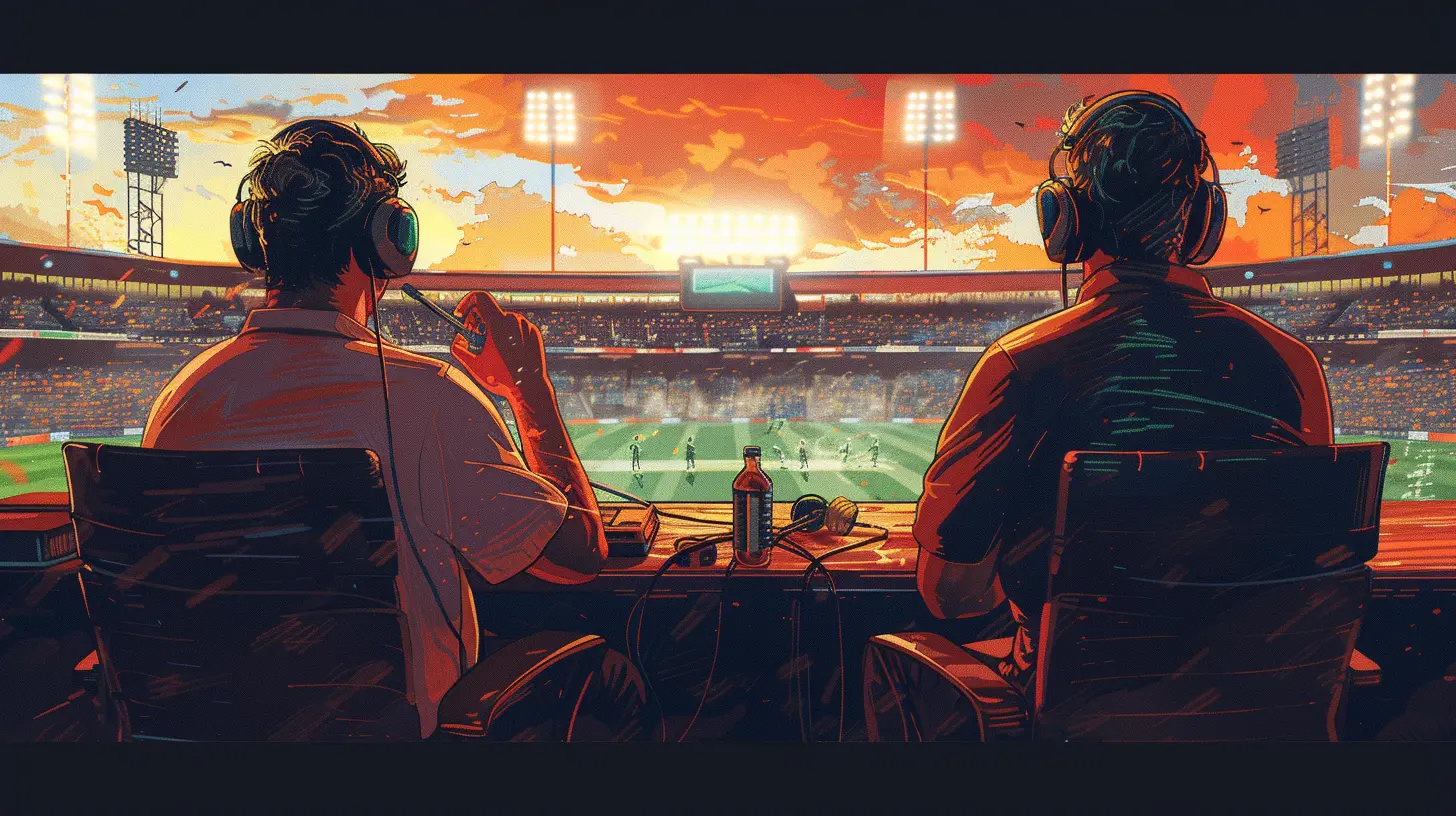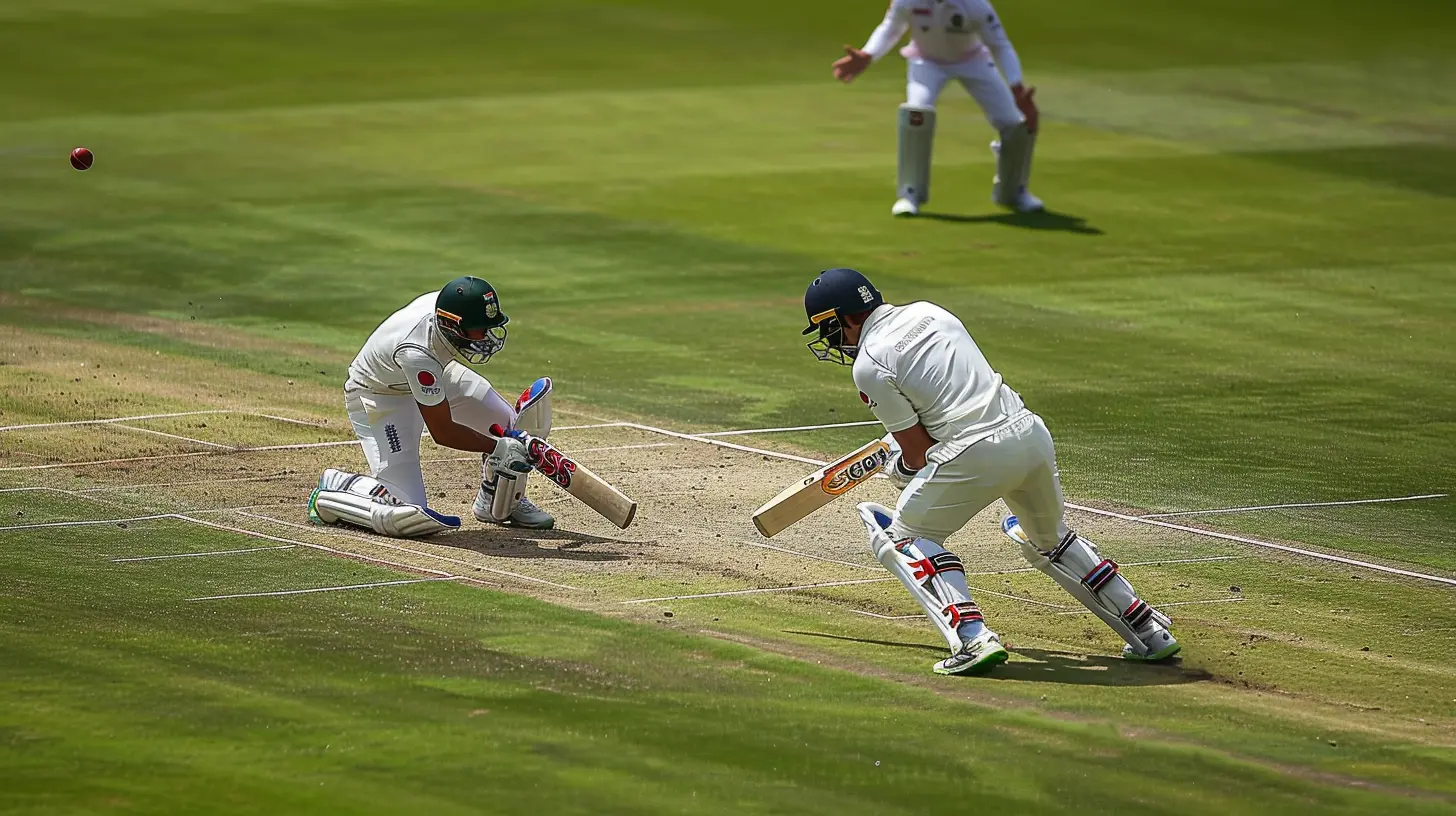The Evolution of Cricket Commentary: From Radio to Digital
15 October 2025
Cricket commentary has always had a special place in the hearts of fans. It's the voice we associate with nail-biting finishes, legendary innings, and unforgettable moments. But like everything else in this fast-paced world, cricket commentary, too, has evolved. From the crackling voices on AM radios to streaming commentary on apps, we've come a long way.
Let’s take a nostalgic ride through the transformation of cricket commentary, from the golden era of radio to the hyper-interactive age of digital platforms.
The Humble Beginnings: Cricket on the Radio
Can you imagine a time when people gathered around a single radio set to follow every ball of a Test match? Hard to believe now, right? But that was the norm back in the early to mid-20th century. Radio was the OG medium that brought cricket to the masses.There was something magical about it. Despite not seeing the action, fans felt like they were right there at the stadium. Commentators had the unique job of painting pictures with words. They described not just the game but the atmosphere—the cheer of the crowd, the rustle of leaves in the outfield, even the sound of birds. It was all about imagination, and it worked like a charm.
The Art of Audio Storytelling
These radio commentators were storytellers more than anything else. They didn’t just inform; they performed. Names like John Arlott in England and Bobby Talyarkhan in India were legends. They had mesmerizing voices that made even a boring stretch of play feel poetic.They followed a rhythm—talk, pause, describe, and then let the sound of the crowd take over. It wasn’t perfect, but it was real.
Enter Television: A Game Changer in Every Sense
With the arrival of television in the 1950s and its popularity in the 70s and 80s, cricket commentary found a new avenue. Suddenly, fans could see the cover drives, the doosras, the stumpings—all in vivid motion.But here's the twist: with pictures doing much of the talking, commentators had to change their style. The art transitioned from vivid description to analysis. The role shifted from narrators to explainers.
From Descriptives to Insights
Commentators now had to add value beyond what viewers could already see. You didn’t need someone to tell you "The ball is short and wide outside off"—you could see it for yourself. What fans wanted now were insights. Think strategy, stats, player psychology, and behind-the-scenes tidbits.This gave rise to former cricketers in the commentary box. They brought a fresh perspective, often diving deep into mental games, field placements, and technique. Think Richie Benaud, Sunil Gavaskar, or Tony Greig—legends with both bat and mic.
The Rise of Cable & Satellite: Global Voices, Local Colors
In the 1990s and early 2000s, cable and satellite TV exploded. Suddenly, cricket wasn’t just a local affair anymore. It went global. You could watch an India vs. Pakistan match sitting in New York, London, or Sydney.This opened up commentary to a worldwide audience. Broadcasters started experimenting with regional languages, mixed commentary teams, and more engaging segments. The commentary box became more diverse. It wasn’t just about being polished anymore—it was about being relatable.
Commentary in Multiple Languages
Commentary was no longer a one-size-fits-all. Hindi, Tamil, Bengali, Marathi, and even Punjabi commentary started popping up. This made the game more accessible to fans who weren't fluent in English. Imagine your favorite sixes being celebrated in the language you dreamed in—that hit differently, didn’t it?It made cricket truly democratic—no matter where you were from or what language you spoke, the game spoke to you.
The Digital Revolution: Cricket Meets the Internet
Then came the 2010s, and with it, the digital wave swept over everything—including cricket commentary. It started with live scorecards and real-time blogs. Then came app-based commentary, podcasts, YouTube channels, and even memes on Twitter during matches.Today, cricket commentary isn’t just something you listen to or watch. You engage with it. You tweet back, drop comments, ask questions, and even become a commentator yourself.
Live Tweeting and Fan Commentary
These days, everyone with a phone can express an opinion on the game. And many do! Some of the funniest, most insightful, or downright absurd comments now come from regular fans during the game. Platforms like Twitter and Instagram have turned every match into a global conversation.The digital age has also birthed fan-led commentary platforms where you can tune into non-professional, passionate voices. It’s raw, honest, and often, more entertaining than the mainstream stuff.
Podcasts and YouTube Channels Take Over
Who would have thought we'd reach a point where people actually listen to cricket podcasts during their commute? Now, you’ve got ex-cricketers, analysts, and even comedians dissecting every game, series, and player.Podcasts like “The Grade Cricketer” or YouTube channels like “Aakash Chopra” and “Jarreau Sports” bring in a mix of humor, insight, and real talk—stuff you didn’t get from traditional commentary.
AI, AR, and the Future: What's Next for Cricket Commentary?
Okay, so what’s next? Well, artificial intelligence and augmented reality are already stepping in.We’ve got AI-generated stats, predictive models, and graphic-rich storytelling that help both commentators and fans digest the game more deeply. Smart-score overlays, ball-tracking, heat maps—these aren't just flashy tools; they’ve started influencing how commentary is delivered.
Interactive Commentary? Oh Yes!
Imagine switching between “fun commentary,” “serious analysis,” and “player-focused” modes on your app. Some platforms are already testing those features. You're not just consuming commentary anymore—you’re customizing it.We may even see AR-based commentary experiences where players walk into your living room (virtually) and break down their innings for you. Sounds sci-fi? Well, it’s closer than you think.
The Human Element: Why Voice Still Matters
With all this tech, you might wonder—do we still need human commentators?Absolutely.
Because commentary is not just facts and figures. It’s emotion. It’s the collective gasp when a player hits a last-ball six. It’s the voice that makes a moment timeless. Even if AI gives you data, it can’t give you goosebumps.
Think back to Ravi Shastri’s “Dhoni finishes off in style!” or Harsha Bhogle’s poetic one-liners. These aren’t just soundbites; they’re etched into cricketing history. No bot can replicate that soul.
What Makes a Great Cricket Commentator Today?
So what’s the secret sauce? In today’s world, a great commentator needs a few key traits.- Cricketing Knowledge: Goes without saying.
- Authenticity: Fans can sniff out fakeness a mile away.
- Humor and Wit: Keeps things light, especially during slow phases.
- Storytelling Ability: Stats are forgettable, stories stick.
- Tech-savviness: Knowing how digital platforms work is a plus.
It’s a tougher job now, but also a more impactful one.
A Final Word: From One Fan to Another
Cricket commentary has been on an incredible journey—from being the only way to follow the game to becoming a multi-platform, interactive experience. It has shaped our memories and our love for the game.Whether you grew up listening to radio crackles or binge YouTube analysis after every match, there’s something beautiful about how commentary connects us to cricket. It’s not just about what's happening on the field—it's about how it makes us feel off the field.
So the next time you tune in to a match, take a moment to appreciate the voices behind the mic. Their words might just become a part of the cricketing soundtrack of your life.
all images in this post were generated using AI tools
Category:
CricketAuthor:

Ruben McCloud
Discussion
rate this article
1 comments
Helen Strickland
Cricket commentary has transformed; nostalgia meets innovation.
November 1, 2025 at 11:48 AM

Ruben McCloud
Thank you for your insight! Indeed, the blend of nostalgia and innovation has enriched the cricket commentary experience, reflecting the sport's evolution across platforms.


